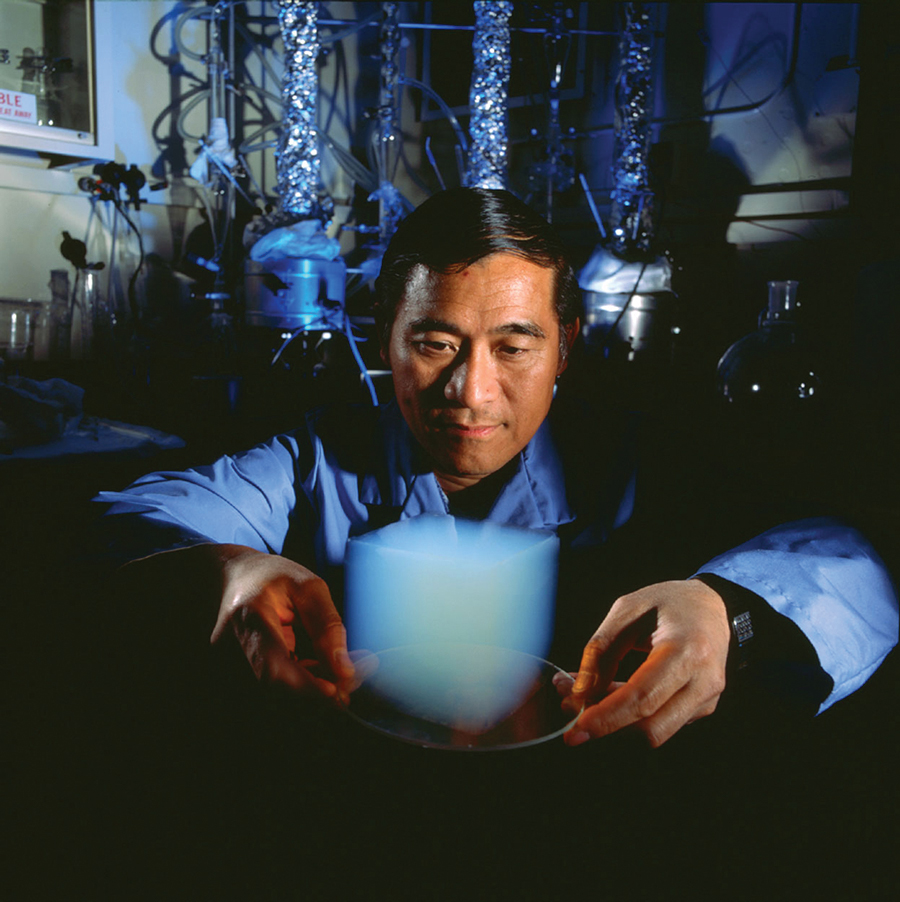Aerogel, << AIR uh jehl, >> is an artificial, dry solid known for its exceptionally low density. Like a sponge, an aerogel contains many tiny holes or pores. In the case of an aerogel, these pores are much smaller—measuring nanometers (billionths of a meter) in size—and are filled with air. Aerogels typically consist of from 95 percent to more than 99 percent air. Aerogels appear ghostly and translucent and thus have been nicknamed “frozen smoke” or “solid smoke.”

The name aerogel comes from the way these solids are produced. First, a gel is made by combining a liquid with a substance such as silica, carbon, or metal oxides. This substance forms clusters of long molecule chains surrounded and supported by the liquid. Under high pressure and temperature, the liquid is removed and replaced with air. The molecules left behind retain their clustered structure, creating a finished aerogel.
Because of their high air content and complex molecular structure, aerogels make extremely effective thermal insulators, substances that block the flow of heat. Scientists are working to produce cheap aerogels for use in such products as refrigerators and winter jackets. Aerogels have other unique properties that make them desirable for use in catalysts, filters, optics, sensors, and other applications.

The American chemical engineer Steven Kistler wrote the first scientific paper on aerogels, published in 1931. Since then, scientists have continued to study and improve aerogels. In 2004, the United States probe Stardust used an aerogel collector to capture space dust and particles given off by a comet. In 2013, a team of Chinese material scientists used graphene (carbon sheets that have the thickness of one atom) to create an elastic aerogel with a very low density. Graphene aerogel is one of the lightest materials on Earth.
See also Stardust.
